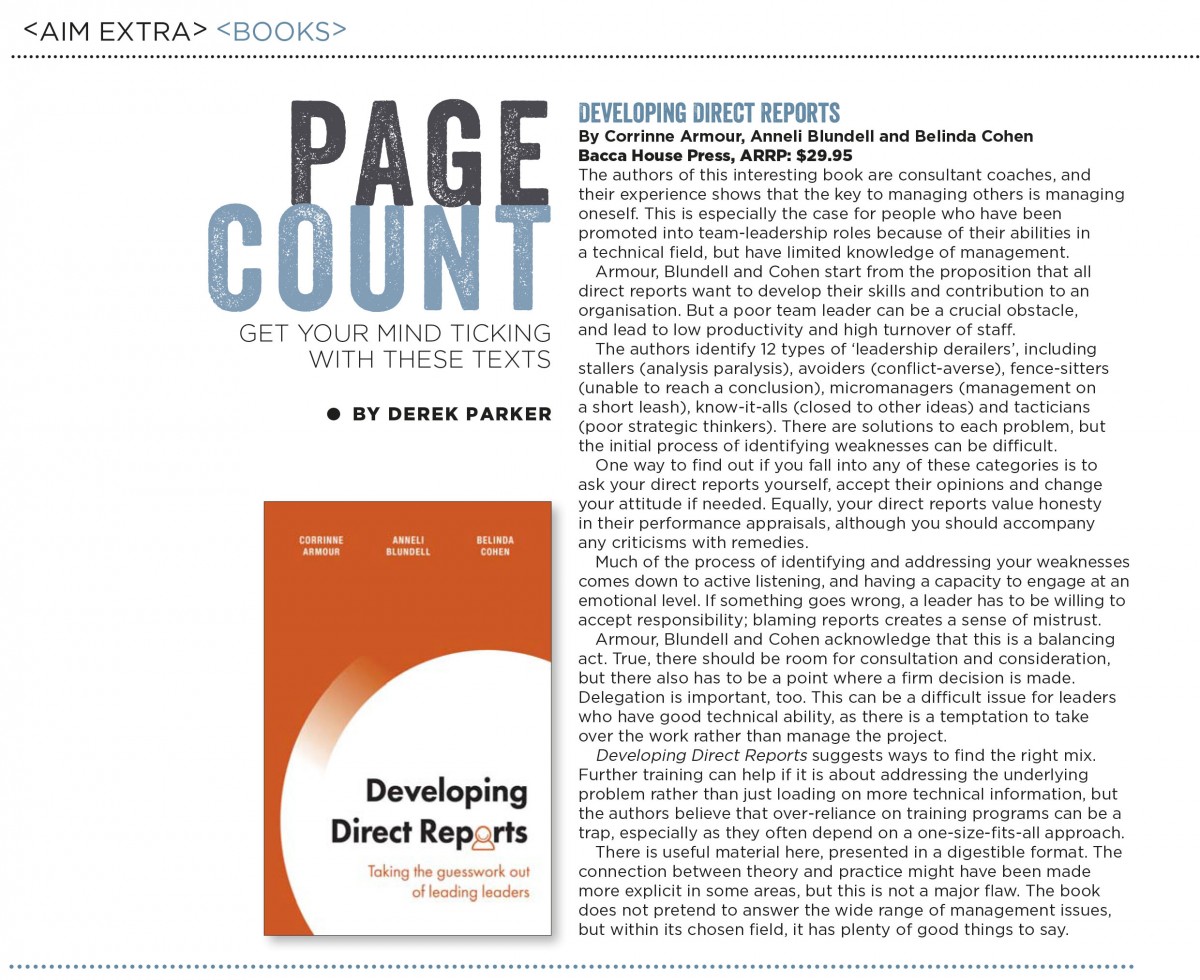
The authors of this interesting book are consultant coaches, and their experience shows that the key to managing others is managing oneself. This is especially the case for people who have been promoted into team-leadership roles because of their abilities in a technical fi eld, but have limited knowledge of management.
Armour, Blundell and Cohen start from the proposition that all direct reports want to develop their skills and contribution to an organisation. But a poor team leader can be a crucial obstacle, and lead to low productivity and high turnover of staff.
The authors identify 12 types of ‘leadership derailers’, including stallers (analysis paralysis), avoiders (conflict-averse), fence-sitters (unable to reach a conclusion), micromanagers (management on a short leash), know-it-alls (closed to other ideas) and tacticians (poor strategic thinkers). There are solutions to each problem, but the initial process of identifying weaknesses can be difficult.
One way to find out if you fall into any of these categories is to ask your direct reports yourself, accept their opinions and change your attitude if needed. Equally, your direct reports value honesty in their performance appraisals, although you should accompany any criticisms with remedies.
Much of the process of identifying and addressing your weaknesses comes down to active listening, and having a capacity to engage at an emotional level. If something goes wrong, a leader has to be willing to accept responsibility; blaming reports creates a sense of mistrust.
Armour, Blundell and Cohen acknowledge that this is a balancing act. True, there should be room for consultation and consideration, but there also has to be a point where a fi rm decision is made. Delegation is important, too. This can be a difficult issue for leaders who have good technical ability, as there is a temptation to take over the work rather than manage the project.
Developing Direct Reports suggests ways to find the right mix. Further training can help if it is about addressing the underlying problem rather than just loading on more technical information, but the authors believe that over-reliance on training programs can be a trap, especially as they often depend on a one-size-fits-all approach.
There is useful material here, presented in a digestible format. The connection between theory and practice might have been made more explicit in some areas, but this is not a major flaw. The book does not pretend to answer the wide range of management issues, but within its chosen field, it has plenty of good things to say.
First published in AIM Extra.
STAY IN THE LOOP

